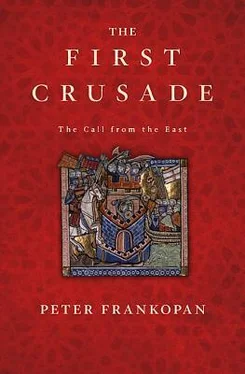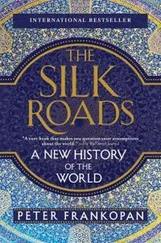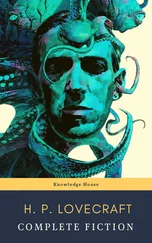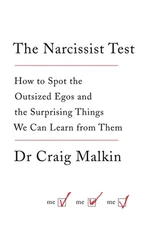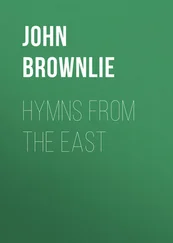The papacy and western Europe at the time of the First Crusade
There are any number of outstanding studies about Europe on the eve of the Crusade. For the papacy, H. E. J. Cowdrey’s Pope Gregory VII, 1073–1085 (Oxford, 1998) and Alfons Becker’s magisterial Papst Urban II 1088–99 , 2 vols. (Stuttgart, 1964–88) are essential. Cowdrey’s The Age of Abbot Desiderius: Montecassino, the Papacy and the Normans in the Eleventh and Early Twelfth Centuries (Oxford, 1983) is important, as is Josef Deér’s Papsttum und Normannen: Untersuchungen zu ihren lehnsrechtlichen und kirchenpolitischen Beziehungen (Cologne, 1972). Ian Robinson’s The Papacy 1073–1198 (Cambridge, 1990) provides a convincing commentary on Rome’s struggles in this period. The same author’s Henry IV of Germany, 1056–1106 (Cambridge, 1999) is excellent on the crises in Europe in the late eleventh century. The collected works of Timothy Reuter, edited by Janet Nelson, Medieval Polities and Modern Mentalities (Cambridge, 2006), and Karl Leyser, edited by Reuter, in Communications and Power in Medieval Europe: The Gregorian Revolution and Beyond (London, 1994) offer much food for thought.
Steven Runciman’s Eastern Schism: A Study of the Papacy and the Eastern Churches During the Eleventh and Twelfth Centuries (Oxford, 1955) still provides a clear narrative of the events of 1054, though Henry Chadwick’s East and West: The Making of a Rift in the Church: From Apostolic Times Until the Council of Florence (Oxford, 2003) puts the schism in a wider context. Also worth seeing here is Aristeides Papadakis and John Meyendorff, The Christian East and the Rise of the Papacy: The Church 1071–1453 (New York, 1994) and above all Axel Bayer’s Spaltung der Christenheit: Das sogenannte Morgenländische Schisma von 1054 (Cologne, 2002). Tia Kolbaba’s The Byzantine Lists: Errors of the Latins (Urbana, 2000) is helpful on the rivalry between the Eastern and Western churches. For the investiture crisis, see Ute-Renata Blumenthal’s The Investiture Controversy: Church and Monarchy from the Ninth to the Twelfth Century (Philadelphia, 1988) and Gerd Tellenbach, The Western Church from the Tenth to the Early Twelfth Century (Cambridge, 1993).
The Byzantine Empire in the late eleventh century
The Oxford History of Byzantium , edited by Cyril Mango (Oxford, 2002) and the Cambridge History of Byzantine Empire , c.500–1492 , edited by Jonathan Shepard (Cambridge, 2008) provide introductions to the Byzantine Empire in general that are clear and often provocative. Angeliki Laiou’s The Economic History of Byzantium, From the Seventh Through the Fifteenth Century , 3 vols. (Washington, DC, 2002) is also excellent, if monumental.
There are some outstanding collections of essays on Constantinople. See Cyril Mango’s Studies on Constantinople (Aldershot 1993), and his Constantinople and its Hinterland (Aldershot, 1995) (with Gilbert Dagron). Paul Magdalino’s Studies on the History and Topography of Byzantine Constantinople (Aldershot, 2007) offers much that is original and provocative. For a more general survey, see Jonathan Harris, Constantinople: Capital of Byzantium (London, 2007).
For the later eleventh century, the best secondary work is Jean-Claude Cheynet’s Pouvoir et contestations à Byzance 963–1210 (Paris, 1990). Alexander Kazhdan’s seminal work on the Byzantine aristocracy is available in an Italian translation, L’aristocrazia bizantina: dal principio dell’XI alla fine del XII secolo (tr. Silvia Ronchey, Palermo, 1997). Jonathan Shepard’s brilliant ‘Aspects of Byzantine attitudes and policy towards the West in the 10th and 11th Centuries’, Byzantinische Forschungen 13 (1988), pp. 67–118 is a fine introduction to Byzantine attitudes to foreigners. Also see the same scholar’s ‘The uses of the Franks in 11th Century Byzantium’, Anglo-Norman Studies 15 (1992), pp. 275–305, ‘“Father” or “Scorpion”? Style and substance in Alexios’ diplomacy’, in Mullett and Smythe, Alexios , pp. 68–132, and ‘Cross-purposes: Alexius Comnenus and the First Crusade’, in Phillips, First Crusade , pp. 107–29. Krinje Ciggaar’s Western Travellers to Constantinople: The West & Byzantium, 962–1204 (Leiden, 1996) shows just how cosmopolitan the city was in this period.
The reign of Alexios I Komnenos
Ferdinand Chalandon’s Essai sur le règne d’Alexis I Comnène (Paris, 1900) is still the last major monograph on Alexios’ rule. It remains lucid and very helpful. The proceedings of the 1989 Belfast symposium which appear in the Mullett and Smythe volume, Alexios I Komnenos , are excellent and contain a series of thought-provoking and important papers, above all those of Magdalino, Shepard, Macrides and Angold. I have written challenging the view of the emperor’s family as the bedrock of Alexios’ rule, highlighting the disgrace of members of his inner circle on the eve of the Crusade, P. Frankopan, ‘Kinship and the distribution of power in Komnenian Byzantium’, English Historical Review 495 (2007), pp. 1–34.
For the army under Alexios and his successors, John Birkenmeier, The Development of the Komnenian Army: 1081–1180 (Leiden, 2002), though Armin Hohlweg, Beiträge zur Verwaltunsgeschichte des oströmischen Reiches unter den Komnenen (Munich, 1965) still has much to say. Paul Magdalino’s The Empire of Manuel I Komnenos 1143–1180 (Cambridge, 1993) is worth reading not only for Alexios’ successors, but also as a backdrop to the composition of the Alexiad . For this, also see Paul Stephenson, ‘The Alexiad as a source for the Second Crusade’, Journal of Medieval History 45 (2003), pp. 41–54.
On the economy, see Alan Harvey, Economic Expansion in the Byzantine Empire (900–1200) (Cambridge, 1989) and his important piece on ‘The land and taxation in the reign of Alexios I Komnenos: The evidence of Theophylakt of Ochrid’, Revue des Etudes Byzantines 51 (1993), pp. 139–54. Michael Metcalf’s Coinage in South-Eastern Europe (Oxford, 1979) is still essential, as is his article ‘The reformed gold coinage of Alexius I Comnenus’, in Hamburger Beiträge zur Numismatik , vol. 16 (1962), pp. 271–84. For the debasement of the currency in the eleventh century, see Cécile Morrisson, ‘La Dévaluation de la monnaie byzantine au XIe siècle’, Travaux et Mémoires 6 (1976), pp. 3–29.
Byzantium and its neighbours
Claude Cahen’s seminal ‘La première pénétration turque en Asie Mineure’, Byzantion 18 (1948), pp. 5–67 dominated assessment of Asia Minor in the eleventh century, charting the rise of Turkish pressure before and after the battle of Manzikert. Jean-Claude Cheynet offered the first important correct ive in ‘Manzikert: un désastre militaire?’, Byzantion 50 (1980), pp. 410–38. More recently, the same historian has gone further with ‘La résistance aux Turcs en Asie Mineure entre Mantzikert et la Première Croisade’, in
Eupsykhia: Mélanges offerts à Hélène Ahrweiler 2 vols. (Paris, 1998), 1, pp. 131–47. Both provide crucial re-evaluations about the Turks and about Asia Minor. The importance of relying on archaeological evidence, as well as on the text, is clear from the work of Clive Foss, including ‘The defences of Asia Minor against the Turks’, Greek Orthodox Theological Review 27 (1982), pp. 145–205. New material from sites such as Strobilos, Sagalassos, Ephesus and elsewhere continue to challenge accepted views about the nature, extent and timing of Turkish settlement in Anatolia. For the rising pressure on Byzantium to the north of Constantinople, see Paul Stephenson, Byzantium’s Balkan Frontier (Cambridge, 2000) which has supplanted previous works by scholars from this region.
Читать дальше
